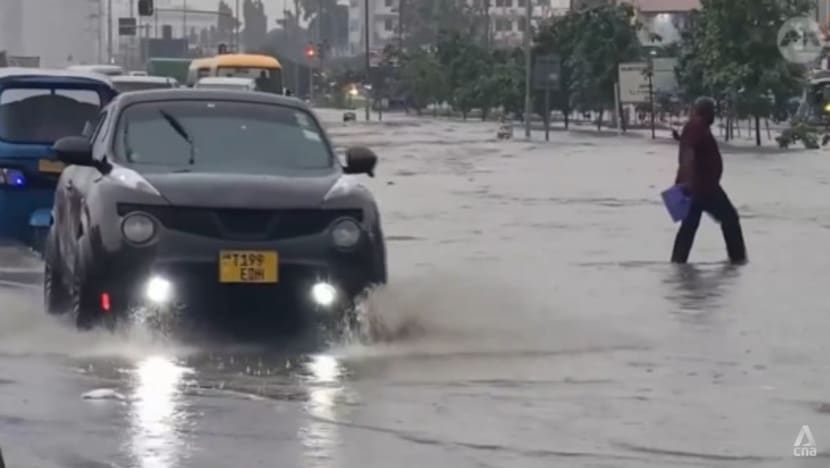Rising sea levels, flooding threaten lives in Tanzania’s Dar es Salaam
The city’s history of flooding is partly due to inadequate and ageing infrastructure and its low-lying geography.

Tanzania's Dar es Salaam city struggles to cope with rapid expansion, fend against climate change

This audio is generated by an AI tool.
DAR ES SALAAM, Tanzania: People have been moving to Tanzania’s commercial hub in droves, drawn by its booming economy.
But the rapidly expanding population has put the infrastructure of Dar es Salaam under strain, and it is now buckling under poor urban planning.
Africa’s fastest-growing city was initially designed for just 300,000 people. By 2030, its population of 7 million is projected to hit 10 million.
Adding to its problems are the effects of climate change like worse and more frequent extreme weather, which has led to suffering across the city.
For instance, resident Abdallah Mdembe almost lost his home when massive floods in April threatened to uproot it.
While he still has a roof over his head, the situation continues to be dire, he said, with rains washing away 20 houses in his area.
He fears the situation will get worse.
According to the United Nations Office for Disaster Risk Reduction, the impacts of this year’s El Niño phenomenon - typically marked by extreme weather - have been significant, with 5 million people affected by flooding in Eastern Africa.
FLOODING, RISING SEA LEVELS
Dar es Salaam's history of flooding is partly due to inadequate and ageing infrastructure as well as its low-lying geography.
Another factor is the Msimbazi River flowing through the city, which is also prone to flooding due to issues such as clogging from solid waste.
The Msimbazi River basin is home to about 1.6 million people, who account for about 30 per cent of Dar es Salaam's total population.
The coastal city also has to contend with rising sea levels - a result of climate change - that trigger flooding.
The higher sea levels have eroded land crucial for tourism, jeopardised agriculture and clean water supplies, wrecked biodiversity, and put roads and communities at risk.
The situation in Dar es Salaam exemplifies a growing problem faced by many of Africa’s rapidly urbanising cities.
In these areas, the ever-increasing effects of climate change are hammering away at weak spots and threatening not just their mid-term growth, but also their long-term survival.
GOVERNMENT EFFORTS
According to the World Bank, just 30 per cent of Dar es Salaam residents have access to liquid and solid waste management systems, exposing them to the risk of contracting waterborne diseases like cholera during the rainy season.
In an effort to improve the situation, the Tanzanian government has launched initiatives to enhance infrastructure and waste management.
These include a US$200 million World Bank-funded project to strengthen flood resilience and integrate urban development efforts in the Msimbazi River basin.
More plans are in place to upgrade waste disposal sites and build sewage water projects in parts of the city.
Poor waste disposal practices are also a problem.
“During the rainy season, it's common for people to open their latrines to dispose of waste as a means of cleansing. This practice is hazardous to public health,” said waste management expert Valerian Mushi.
“Proper planning is essential to ensure we have effective waste management services available.”














